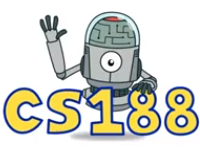CS 61B Resources
By Allen Guo
Last Updated: 04/25/2018
About Me
General Resources
- CS 61B course website: link.
- Exams from past semesters: link.
- Algorithms textbook site: link.
Java
- Java syntax practice problems: link.
- OpenJDK source, i.e., how Java built-in classes are implemented: link.
- For example, here's how Java's real HashMap is implemented: link.
- "Java is Pass-by-Value, Dammit!" by Scott Stanchfield.
- A quick guide to method selection: link.
- How to use comments effectively: link.
Git
- GitHub's Git tutorial: link.
- Git is the name of the version control software. It's free and open source. GitHub is a company that hosts Git repositories (repos). You can use it as a central Git server for your projects.
- How to fix common Git problems: link.
- Make your shell Git-friendly with autocompletion and prompt support.
- I have custom Bash aliases for Git commands, which you can see in the "Git" section here: link.
- "A Hacker's Guide to Git" by Joseph Wynn.
Asymptotics
- The single most confusing topic in asymptotics is the difference between best-case/worst-case and big-O/Theta/Omega.
- Big-O/Theta/Omega describes the runtime of an algorithm in one or multiple cases. Best-case/worst-case describes a particular input case for an algorithm.
- Here's an example: "The worst-case runtime for quicksort is Theta(n^2)."
- Notice how "worst-case" describes the input. For example, for quicksort where the first element is chosen as the pivot, the worst-case input is an already-sorted list.
- What's confusing is that I could also say, "The runtime for quicksort is O(n^2)."
- This is a more general statement: I'm implying that this statement is true for all cases/inputs.
- Notice that this does not imply that the worst-case runtime of quicksort is Theta(n^2) (why not?).
- You can't perform asymptotic analysis just by blindly following rules like "multiply for nested loops".
- Common sums:
- Sum of numbers: 1 + 2 + 3 + 4 + ... + n = Theta(n^2).
- Sum of squares: 1 + 4 + 9 + 16 + ... + n^2 = Theta(n^3).
- Geometric sum: 1 + 2 + 4 + 8 + ... + n = Theta(n).
- Uncommon sums:
- Sum of logs: log(1) + log(2) + log(3) + log(4) + ... + log(n) = log(n!) = Theta(n log n).
- Sum of subarray lengths: (n)(1) + (n-1)(2) + ... + (2)(n-1) + (1)(n) = Theta(n^3).
BSTs
- Some problems:
- Write a method that, given a binary tree of integers, returns if the tree is a valid BST. (Solution: link.)
- Write a method that, given a BST and two nodes in that BST, returns the lowest common ancestor of those two nodes, i.e., the common ancestor of the nodes farthest from the root. (Solution: link.)
2-3 Trees (and LLRB Trees)
- Diagram with examples of insertion: link.
- Visualizer: link (use "Max. Degree = 3" for 2-3 tree).
Heaps
- Students tend to confuse heaps and BSTs. Do you know what the differences are?
- Visualizer: link.
- Proof that bottom-up heapify takes linear time: link (see the "BuildHeap Analysis" section).
Graphs
- A-star search walkthroughs: link.
- CS 188 exam prep worksheet: link. Treat "Uniform Cost Search" as a synonym for Dijkstra's algorithm. Ignore problems about "Greedy Search".
Dynamic Programming (DP)
- DP isn't a specific algorithm, but rather a general problem-solving technique.
- So learning DP is less like learning Dijkstra's and more like learning recursion.
- Don't worry if the definition of DP is confusing at first.
- Do practice problems. Then think about what those problems had in common. Then go back to the definition.
- Intro tutorial: link.
- Another intro: link.
- Try to solve the problem yourself before looking at the answer.
Inspiration and Wisdom

Internships and Interviews
- If you have any interest at all in working in software development in the future, I highly recommend you apply for internships this cycle, even if you don't feel ready.
- At the very least, you'll get a feel for what the process is like and what employers are looking for.
- "A Brief Guide to Tech Internships" by Alexey Komissarouk.
- Except don't wait until winter break to start applying. Lots of positions at popular companies fill up by the end of fall semester.
- What your resume should look like: link.
- For interview practice, I (like everyone else) recommend Cracking the Coding Interview.
- Find a buddy, reserve a library room with a whiteboard, and take turns interviewing each other.
- Study the problem-solving flowchart from the book: link.
- Tip: Keep a list of interesting technical questions that you've encountered, including the solutions.
- Review the list often and add to it after every practice session.
- Before every real interview, go through the entire list and make sure you know everything on it.
- Coding interview tips from Interview Cake: link.
- A list of coding questions by Max Noy: link.
- An even bigger list by Program Creek: link.
- A still bigger list by Vivek Srivastava: link.
What Courses Do I Take Next?

- CS draft schedule (i.e., who's teaching what): link.
- Crowdsourced advice from the CS Facebook group: link.
- HKN's directed graph of EE/CS courses: link.
- Course advice for aspiring data scientists, by Khoa Tran: link.
- If you can't make up your mind, I recommend CS 61C plus either CS 170 (harder) or CS 188 (easier).
- This should help you identify your interests while preparing you for interviews and/or research.
I Still Have Questions!
Don't hesitate to email me (allenguo@berkeley.edu).

